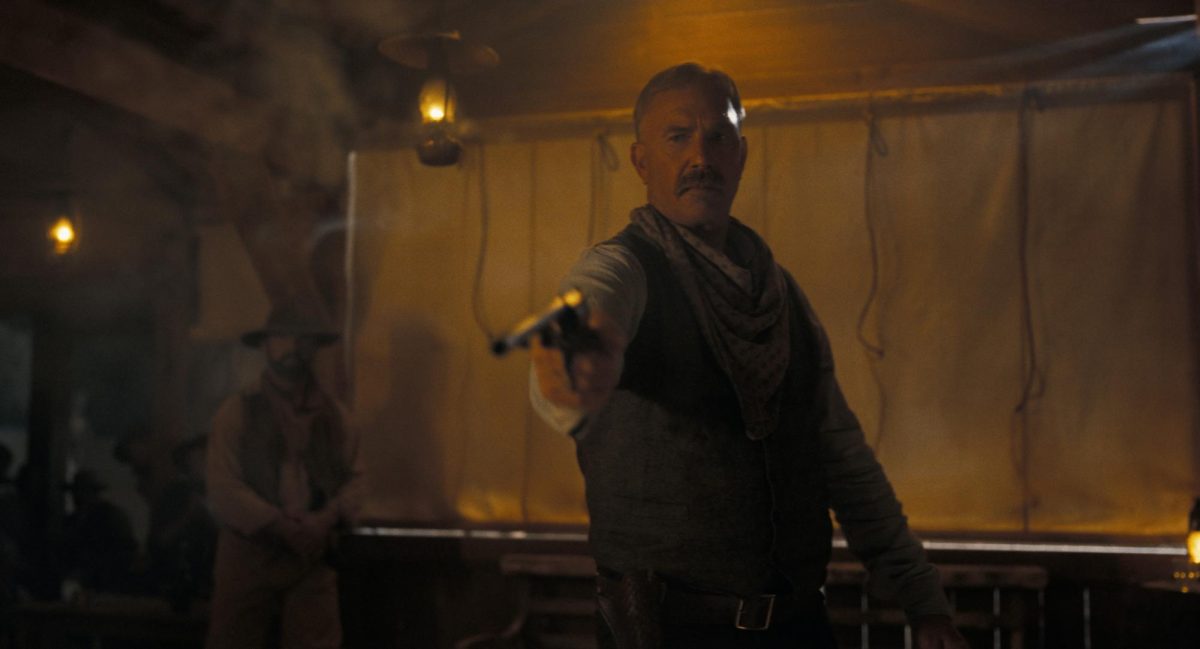There is no shortage of tragedies in Anton Chekhov’s “The Seagull.” But even when confronted with the play’s abusive mothers, wasted lives, tragic miscarriages and suicidal depression, director Peder Melhuse can’t help but laugh.
“We tried to highlight the comedy in this play,” Melhuse said. “It’s kind of a cosmic comedy. If someone is looking down on this particular estate, they are laughing pretty damn hard. The characters can’t connect, but they keep on trying. That is humorous from a particular perspective.”
Melhuse’s notion of disconnection is discernible in the production. The actors operate under separate languages of discourse.
The playwright Constantine Treplev, played by Eb Madson, a senior in the Actor Training Program at the U, is in a tragedy. As Madson describes it, “There are two things that Constantine really cares about: his writing and Nina. When those things don’t work out, it’s heart-shattering.”
Masha, played by Gwen de Veer, a junior in the ATP, is suffering through the effects of her unrequited love for Constantine in a melodrama, while Peter Sorin, a man who allowed the fear of rejection to turn him into a bureaucrat, is in a comedy.
As the play progresses, few differences are bridged. Instead, characters are consumed by their own shortcomings and delusions.
“Chekhov’s characters cannot connect with one another,” Melhuse said. “It’s impossible. Chekhov felt that people simply cannot connect.”
Richard Scharine, a professor emeritus in the Theatre Department at the U, plays the role of Sorin. He has been teaching Chekhov for years, but is acting in a Chekhov play for the first time.
“I have an actress playing my younger sister who is 17 years younger than I am in the text and 46 years younger in real life. I often think of our poor mother,” Scharine joked.
Scharine points to the profound effect parallelism has on the play. The young actress Nina, played by Olivia Roberts, a freshman in the ATP, parallels the famous actress, Arkadina, played by Stephanie Stoker. Nina’s insecurities and failures, prompting her to proclaim once to Constantine, “You don’t know what it feels like to be a bad actor,” complement Arkadina’s unqualified success and arrogance.
On the other side of the gender fence, Madson’s hapless Constantine is paralleled by the famous short story writer Trigorin, played by ATP freshman Ryon Sharette, and Madson believes that both function as the alter ego of the absent Chekhov. Meanwhile, Melhuse insists that the true alter ego of Chekhov is Dr. Dorn, played by Kory Kyker, the play’s voice of reason, and Scharine believes that Sorin is the ineffectual counterpart of everyone involved, a man who wants to do everything, but ends up doing nothing.
“Every actor really wants to play Chekhov because Chekhov writes for actors,” Scharine said. “You talk about characterization and stuff. Chekhov does it for you. It’s there. All of the characters are artists to varying degrees of success and even the most successful of them find their limits as human beings,”
This parallelism somewhat mitigates the disorienting effect of Melhuse’s implied disconnection, but the result is at times uncanny. The actors stare off into the audience, replaced in the play with a conveniently scenic lake, and give speeches that further tangle the impromptu parallels, always offering the promise of connection, but never fully delivering.
Chekhov, in his letter to Alexei Suvorin, doesn’t offer much hope for those in search of an easy answer. “You are right in demanding that an artist should take an intelligent attitude to his work, but you confuse two things: solving a problem and stating a problem correctly. It is only the second that is obligatory for the artist.”
Chekhov wasn’t so flippant after the initial 1896 performance of “The Seagull.” The production was disastrous, so much so that Chekhov left halfway through the show and considered retiring from theater. But the play was revived by the influential actor Constantin Stanislavski, and the success of his production prompted the Moscow Art Theatre to take a seagull as its emblem.
Melhuse, though, found himself going away from Stanislavski and his heavy reliance on subtext, and toward a production that was more concerned with the true intent of Chekhov.
“My determination in this production was to tell the story,” Melhuse said. “That’s saying a lot when you talk about Chekhov. There’s a lot of scenery that can be chewed in this play and this cast avoided that. Chekhov started writing these plays as a response to the theater of his day. His idea was to show real life on stage.”
Melhuse, who was inspired by the recent production of “The Seagull” in New York, with Kristin Scott Thomas and Peter Sarsgaard, said of his own cast, “I’ve probably seen the play 10-12 times in my life. This is one of the few casts that I’ve seen that has told the story of “The Seagull.'”
“The Seagull” is playing at the Babcock Theatre, located underneath Pioneer Theatre. The second run begins Thursday and concludes March 1.









